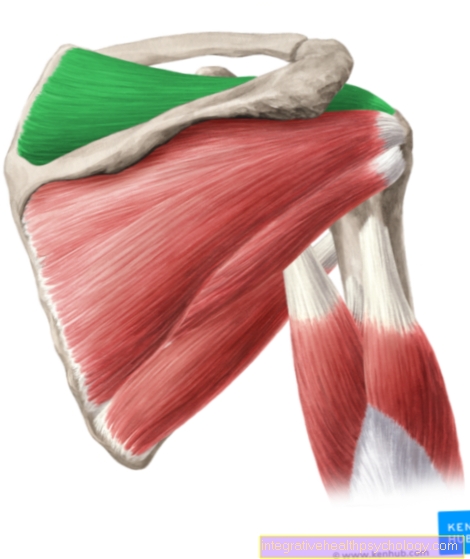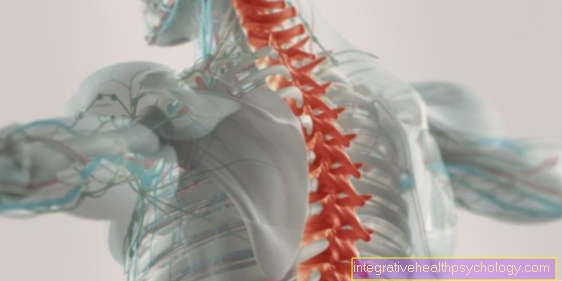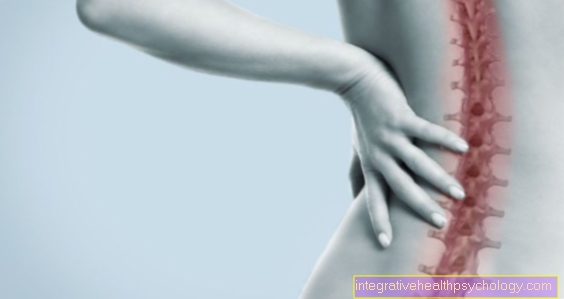Diarrhea and stomach pain
Definition - What is stomach pain with diarrhea?
Stomach pain is the name given to abdominal pain that is mainly located in the upper abdomen. The stomach is usually in the upper part of the abdomen, just below the chest, right in the middle. Depending on how full your stomach is, it can expand a little to the left or right. Stomach pain is the term used to describe pain in the upper abdomen, which is mainly in the middle, but occasionally also a little to the left or right (epigastral = next to the stomach).

Diarrhea, on the other hand, describes a change in bowel movements. This leads to an increased number of bowel movements per day (at least 3 per day) and an increased weight of the bowel movements, which is usually due to the high water content. This makes the stool particularly fluid when having diarrhea.
If the two complaints occur in combination, one speaks of stomach pain with diarrhea.
causes
The causes of stomach pain and diarrhea are diverse. However, these are mostly diseases that affect the entire digestive tract, as this is the only way to cause discomfort both in the stomach and in bowel movements.
Typically, stomach pain occurs when, for example, one has eaten spoiled food. In most cases, bacteria (such as Salmonella or Campylobacter, which cause stomach pain) have already grown in them. The body's first defense reaction is often vomiting in order to remove the bacteria from the digestive tract.
If this is not enough, there will also be changes in bowel movements. Thereby hardly any water is withdrawn from the food in the intestine; rather, the bacterial inflammation leads to more water getting into the food pulp. This makes the stool liquefied and diarrhea occurs. The advantage of diarrhea is that the food passes through the digestive tract particularly quickly, so the bacteria in it have less time to cause damage to the body. Thus, both stomach pain and diarrhea serve as the body's defense mechanism.
Other causes can be, for example, small damage to the gastric mucosa (a so-called ulcus). This can lead to bleeding in the damaged stomach lining. The blood in your stool can also cause diarrhea. Typically, the stool is particularly sticky and dark to black in color.
Read more on the subject at: Blood in the stool
stress
Stress is a non-negligible trigger for many diseases. There are basically two possible causes of diarrhea and stomach pain. Stress can lead to an increase in gastric ulcers (Ulcer) cause. This damage to the gastric mucosa leads to stomach pain and, at the same time, changes in bowel movements with sticky, dark to black diarrhea.
Read more on the subject at: Symptoms of a stomach ulcer
However, stress can also generally irritate the digestive tract. For many people, psychological stress leads either to headaches or abdominal pain. These abdominal pain are often noticeable in the epigastric region and can also lead to a nervous bowel, which subsequently produces more liquid stools. In particularly pronounced cases of indigestion and stomach pain due to stress, one also speaks of irritable bowel syndrome.
Read more on the subject at: Diarrhea from stress and Stomach pain from stress
Antibiotics
Antibiotics are a common cause of diarrhea. The antibiotics are supposed to target bacteria that harm the body and lead to disease. However, the bacteria naturally occurring in the intestine are also damaged by the antibiotics. This leads to an imbalance in this so-called intestinal flora, which can lead to temporary changes in bowel movements such as diarrhea.
On the other hand, stomach pains are less typical when taking antibiotics. However, some people also react to antibiotics with non-specific abdominal pain or stomach ache.
Read more on the subject at: Abdominal pain from antibiotics
In order not to damage the intestinal flora in the long term, antibiotics should be given as sparingly as possible and only for a short period of time. In particular, people who suffer from diarrhea and stomach pain from antibiotics should not receive antibiotic therapy longer than necessary.
Read more on the subject at: Side effects of antibiotics
diagnosis
Diarrhea and stomach pain are initially just two symptoms that can often occur in combination. In order to investigate the cause, the anamnesis (i.e. questioning the person concerned) plays an important role. In this way, possible triggers such as medication, trips abroad, spoiled food or stress can be identified.
Depending on the cause, for example, outlet attempts (pausing medication) can be used to establish a diagnosis. In the case of infectious events such as trips abroad or spoiled food, the best indication is that other people in the vicinity of the person affected are ill; further diagnostics are usually not necessary because the diarrhea and stomach pain heal quickly. If, on the other hand, stress is the trigger or if a gastric ulcer is suspected, a gastroscopy can be important; if necessary, the bleeding can also be closed and therapy can be initiated.
Other accompanying symptoms
In addition to diarrhea and stomach pain, there are often other accompanying symptoms, as the underlying condition is usually something that affects the entire digestive tract. This typically leads to nausea and vomiting.
Vomiting, like diarrhea, serves to cleanse the digestive tract of potential pathogens. General symptoms such as fever, headache and body aches can also occur. These mostly reflect a reaction from the entire immune system. When diarrhea and stomach pain occur together, it is not uncommon for pain in the entire abdominal cavity to occur, for example, caused by cramps in the gastrointestinal tract. In addition, this pain can radiate into other areas of the body, the back is particularly often affected.
Read more on the subject at: Abdominal pain and diarrhea
Other complaints such as dizziness often occur as a result of diarrhea and stomach pain. Because of the diarrhea, those affected lose a lot of fluid in a short time. In addition, they drink less fluids because of the stomach pain. This lack of fluids weakens the body's circulation, which can lead to sudden attacks of dizziness, especially when getting up from sitting or lying down.
Read more on the subject at: Dizziness
nausea
Basically, nausea is a very common accompanying symptom with stomach pain. Usually it is also accompanied by vomiting. With diarrhea and stomach pain, nausea is a sign that something has gotten into the digestive tract that doesn't belong there. Often these are bacterial or viral pathogens that the body wants to get rid of as quickly as possible.
For this purpose, the stomach produces a particularly large amount of gastric acid, since the high acid content can kill many pathogens. This increased acid production often causes nausea and stomach pain, and can also lead to diarrhea.
Vomit
In addition to coughing, sneezing and choking, vomiting is another protective mechanism that is supposed to protect the body from pathogens that enter the body from the mouth, nose and throat. For example, if there are pathogens in foods that are consumed through food, the body tries to destroy these germs in the stomach.
Since it is often not possible to kill all viruses or bacteria in the stomach, vomiting also occurs. The entire stomach contents are simply transported out through the esophagus and with the stomach contents also all pathogens that are contained in it. However, if some germs manage to move in the digestive tract, they next get into the intestines.
A new defense mechanism takes effect there, leading to a rapid influx of water into the food pulp in the intestine. As a result, the pathogens are transported to the anus as quickly as possible. The high water content leads to diarrhea.
Read more on the subject at: Vomiting and diarrhea
dizziness
Dizziness is a symptom which, in the case of diarrhea and stomach pain, is mostly caused by the unbalanced fluid balance. With diarrhea, the body loses a lot of fluid within a short period of time, and many electrolytes (blood salts) are usually also lost. In addition, the fluid and electrolyte stores are not adequately replenished, as the stomach pain prevents the person concerned from consuming too much.
This vicious circle leads to a great lack of fluids. Especially when getting up from a lying or sitting position, the circulatory system cannot pump enough blood against gravity to the brain quickly enough due to the small amount of fluid, which can suddenly lead to severe dizziness.
Read more on the subject at: Dizziness and circulation
Body aches
Pain in the limbs is a symptom that in most cases is associated with a general reaction from the entire immune system. This typically results in a fever and headache as well as a general feeling of illness.
Aching limbs combined with diarrhea and stomach pain are typical signs of gastrointestinal flu. In the process, viral and, more rarely, bacterial pathogens lead to an infection of the entire digestive tract.
In order to get rid of the germs quickly, various defense mechanisms come into play. In the stomach, this leads to stomach pain, possibly also nausea and vomiting. The intestine defends itself against the pathogens with diarrhea. The body fires up its immune system, which leads to a fever, which is often associated with aching limbs.
Back pain
In combination with diarrhea and stomach pain, back pain is often caused by the fact that the pain radiates from the stomach or from the entire abdominal cavity to the back. In addition, stomach cramps can also lead to reactive tension in the back muscles. This leads to long-term tension in the back and thus back pain.
Often, however, the back pain associated with diarrhea and stomach pain is also due to the fact that the sick person is physically gentle. They often lie more in bed or on the sofa, and occasionally they sit much more than they are used to in everyday life. Above all, however, diarrhea and stomach pain lead to less exercise in everyday life, which can also lead to back pain after a few days.
treatment
Treatment for diarrhea and stomach pain depends on the cause and severity of the condition. If, for example, the symptoms of the disease are caused by viruses or bacteria, no specific therapy is often necessary. The body already shows good defense mechanisms against the pathogens due to the diarrhea and stomach pain (possibly with fever and vomiting). In the illness phase, it is more important that the affected person drink plenty of fluids. In addition, a good salt intake should be ensured so that the electrolytes (blood salts) do not get out of balance.
However, those who are more severely ill may need to be given fluids, electrolytes and possibly a sugar solution via the vein. Only in a few cases are drugs used specifically against the pathogens. Viral infections can usually only be treated symptomatically anyway; various antibiotics help against the bacteria, which in turn attack the digestive tract and are therefore not always the best choice.
If, on the other hand, the cause of the diarrhea and stomach pain is a stomach ulcer, therapy with acid inhibitors (Proton pump inhibitors) such as omeprazole or pantoprazole may be useful. If there is already bleeding in the stomach, the ulcer may need to be treated with a so-called clip. This clip can stop the bleeding and is usually inserted during a colonoscopy.
A certain bacterium (Helicobacter pylori) often plays a role in the development of gastric ulcers, which can be treated with antibiotics.
Home remedies
Home remedies that can usefully be used for diarrhea and stomach pain should primarily aim to ensure adequate fluid intake. Affected people with a gastrointestinal infection benefit, for example, from a delicious vegetable or chicken broth. This contains a lot of fluids and also supplies some of the important electrolytes (blood salts). Soothing tea can also have a similar effect. Drinking a lot of tea gives the body sufficient fluids, and you can also add honey or a little sugar to the tea. This adds some energy to the body.
Furthermore, light foods can be a useful measure. In addition to soup and tea, this also includes dry bread and pretzel sticks. These foods have an uncomplicated structure, so they can be quickly broken down into their individual parts in the intestine and absorbed into the blood before they are washed out of the body again by diarrhea. On the other hand, you should avoid a diet rich in fiber for a while, and fructose as found in fruits and juices should be reduced for a few days.
In the case of stomach pain, a hot water bottle can also have an analgesic effect. If, in addition to the symptoms, a fever occurs, those affected can lie down with the hot water bottle under a warm blanket and thus prevent chills. If the fever rises too much, home remedies such as leg compresses or curd and cabbage compresses are useful for cooling down.
Duration and forecast
The duration of diarrhea and stomach pain depends on what triggered the illness. In the case of infectious diseases caused by bacteria or viruses, the disease lasts about a week, and is usually healed within two weeks at the latest. If the sick person is able to drink enough fluids, the infection usually heals without any consequences.
Stomach ulcers can also be quickly contained with good therapy (acid inhibitors). Anyone who regularly has problems with too much stomach acid production can take the acid inhibitors for a longer period of time. The disease only becomes problematic if stomach ulcers (Ulcers) occur, as chronic ulcers can lead to increased bleeding. It also increases the risk of developing malignant diseases of the stomach lining later in life.
Course of disease
The course of the disease in diarrhea and stomach pain looks a little different depending on the pathogen. Typically, stomach pain first occurs, followed by diarrhea and other symptoms such as nausea, vomiting and fever a little later. After a while the symptoms will slowly improve. Depending on the pathogen, the entire course lasts a few days (rota and noroviruses) up to two weeks (mainly bacterial infections).
How do I know if this is contagious?
Infectious diseases associated with diarrhea and stomach pain are usually infectious in nature. Gastrointestinal viruses such as the norovirus or the rotavirus can be particularly contagious. They are excreted in the stool and can quickly be passed on to other people due to insufficient hygiene measures (frequent hand washing and avoidance of contact with the person concerned). Characteristic of this disease is the particularly short course of the disease (quick onset and quick end after only two to three days).
On the other hand, those who suffer from diarrhea and stomach pain, for example from food poisoning, are usually not contagious. Typical signs of this are the rapid onset of stomach pain (usually with vomiting) after consuming a potentially spoiled food. Usually other people who have eaten from the food are also ill.



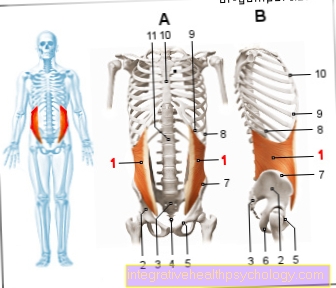





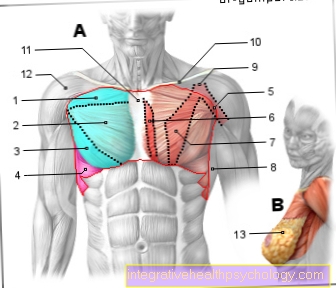
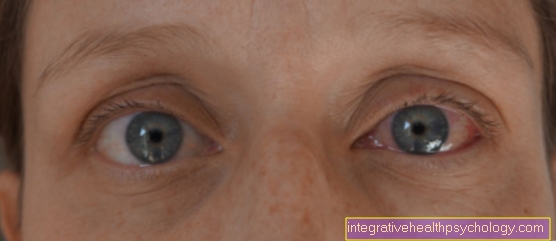




.jpg)





